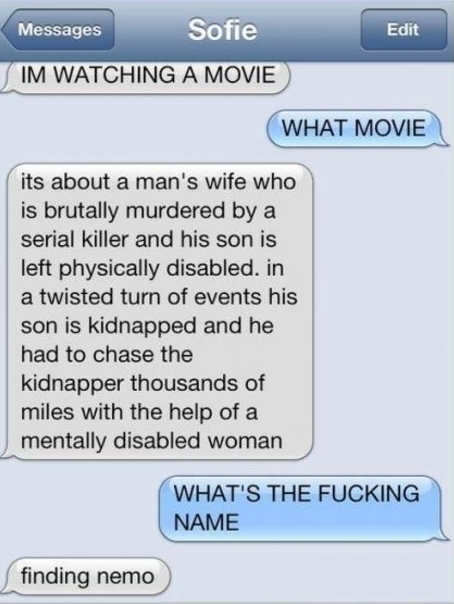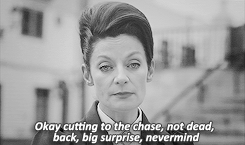
How to fail at storytelling: 7 common mistakes
We’ve told you before that all of us humans are natural-born storytellers. We tell stories all the time. We’ve been doing it since we were small kids. But as soon as we try to tell stories in a business context, we freeze. We try too hard and we end up doing a natural thing in an artificial way. Here are seven common mistakes in business storytelling you sure don’t want to make.
1. Announce you’re about to tell a story
OK so you’ve heard all around that storytelling is the new magic tool to engage your audience. You know that our brains are wired to live stories rather than process them as information. So you’ve decided to leverage storytelling in your management style. Every time you have to communicate something, you begin with “Let me tell you a story”.

Remember you’re in a business context. Chances are your audience will think you’re about to say something not important and get their attention on their smartphone. Or roll their eyes thinking: “Oh, this storytelling hype with managers…”
You need to be more subtle. For the magic of storytelling to happen, you have to casually slip into storytelling mode without telling in advance. Try formulas such as:
- I just remembered something funny (or crazy, or something that changed my views on blah blah)…
- I knew this guy or girl who used to…
- I’ve heard something very interesting…
- You know [insert person or place or brand here]? Well, what you don’t know is…
2. Keep a deep suspense
Great stories have suspense, right? You’ve decided to leverage the power of storytelling in your management style, but you want to give it a Hitchcockian touch. So you tell your stories with lots of suspense, hoping to keep your audience immersed and wanting for more.
Well, you should be careful. Remember you’re in a business context. Your story has to tell a message, not entertain your people. Using too much suspense might upset your audience, especially if they don’t know where you’re going.

So, the important thing here is to make your point first, and then tell a story to illustrate it. It allows the audience to give context to your story. It will keep them engaged throughout the story because they’ll want to understand the link between your point and the story.
3. Abstractify your story
You’re ok to use stories in your job. But since you’re in a business context, you feel you have to be serious and professional. In an effort to make it universal, you make it lean, you don’t get too much into details, you’re very rational about the outline. Chances are, you’ll get rid of the context and cut out descriptions to only keep the key mechanisms.

This is wrong. Storytelling is a part of human communication. It’s from human to human, not robot to robot.
The magic of storytelling only works if you become a storyteller. Don’t be too abstract, give your story a context, give your characters names, don’t be afraid to get into descriptions so you can immerse your audience.
4. Too much information
So you’ve heard about storytelling being about context and descriptions and events, lots of events. You’ve decided to be a great storyteller manager and tell long stories with lots of details about what happened and when and how and why.
You should be careful. In a business context, your story has to make a point, not only entertain.

If you give too much information, you audience has to process and make sense of it. It will drain their attention and you might lose them on the way. Giving too much information makes your story hard for them to follow and for you to keep in mind. Stick to what’s important for your conclusion.
5. Hide failures or skip the conflict
That’s one of the usual suspects in storytelling efforts by brands or managers. You’re ok to tell a story, but you want to make it short and informative. You want to shine. So you end up telling a story like: “Gemma loves to cook scrambled eggs. But she never found a pan that she really liked. One day she discovered ePan, a pan stuffed with new technology. And now her life is great. The end.”

Boring! A story has to be about someone achieving something. Achievement implies obstacles. We like heroes because they try, and fail, and sometimes lose hope, but try again nonetheless.
When you tell a story, don’t be afraid to tell about the failures, the obstacles, the conflicts. It’s what will make your story more human, more credible, more engaging.
6. Pick the wrong hero
You’re thinking: “Wow, this storytelling thing is great. I’ll use that.” And you decide to tell the story of how your product went on a crusade to defeat the mediocrity of existing products that were doing similar things but with less efficiency. We see lots of these stories in advertising these days.

Well… you’re basically saying. “Me, me, me! Love me! Dream you are me!”
The best hero is your customer, or your audience. Don’t try to be the hero of the stories you tell. You’ll have a much more valuable role as the mentor. Think of your clients as Frodo and you as Gandalf. Your product or service can’t be the hero either, the hero has to be a person. Instead, your product or service will be a great artefact to help the hero achieve his goals. In our example, your product would be the one ring worn by Frodo.
7. Get it over with too fast

OK now you know about the power of stories. You want to use it right. You don’t want to go over the top. So you casually slip into a story, tell it without too much information, end it quickly before you make any of the mistakes listed in this post… and go on with your speech.
Well, you should take your time. Don’t feel ashamed because you’re telling a story.
It’s called storytelling for a reason. It’s not only about the story: it’s about how you tell it. Take your time. Pause here and there when you want to emphasize something important. Give your audience the time to process the information, to understand your point, to reflect about what it implies for them.
Do you know other storytelling mistakes? We’d love to hear about them! Just start a conversation using the chat bubble in the bottom right corner of this page!
Learn how we used Storytelling for a local supply of electricity
Shopping in the local store, bringing potatoes from a neighboring village farm to the city using a local cab, amateur actors triumphantly performing in an open-air theatre in the most picturesque local beauty spots – all these examples show how strongly indigenous products have gained in value. In the same spirit, ewz packed electricity generated in the local hydropower plant into a product that is exclusively available to customers living in the city of Zurich.